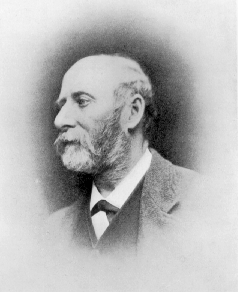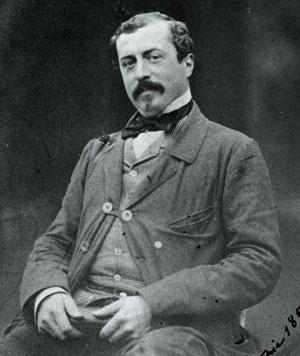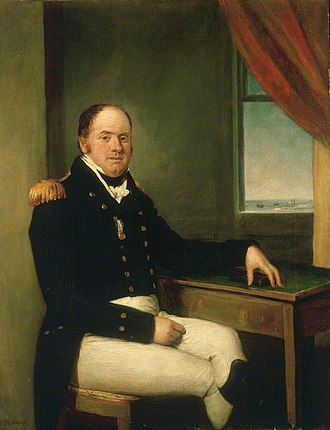Discover Your Roots
SIGN UPDiscover Your Roots
SIGN UPThe name Sir is of English origin and is primarily used as a male name. It is derived from the old French "Sieur" (Lord) and is a formal honorific address for men, often associated with knighthood, certain orders of chivalry, and superior social or military status. Historically, it was used to address knights, baronets, and men of high social standing. In the UK and Commonwealth realms, the prefix "Sir" is granted to knights bachelor, knights of various orders of chivalry, and baronets. The female equivalent for knighthood is "Dame", and the title "Lady" is used for the wife of a knight or baronet. Additionally, "Sir" is commonly used to address men of superior social status or military rank. It is also used in the educational and service industry settings as a mark of respect. The name Sir signifies an honorable title for a man, denoting respect and distinction.

Sir Percy Florence Shelley, 3rd Baronet (12 November 1819 – 5 December 1889), was the son of the renowned English writer and poet Percy Bysshe Shelley and his second wife, Mary Wollstonecraft Shelley, the celebrated novelist and author of Frankenstein. As the only child of Mary Wollstonecraft Shelley to survive infancy, Percy Florence Shelley's upbringing was marked by tragedy, as his older siblings succumbed to illness and his parents endured personal loss. Following his education at Harrow School and Trinity College, Cambridge, he inherited the Shelley baronetcy in 1844, becoming the 3rd Baronet of Castle Goring, Sussex.In 1845, he married Jane Gibson, and while the couple did not have children of their own, they adopted Jane's niece, Bessie Florence Gibson. Sir Percy was an active and influential figure in various social and cultural circles, known for his passion for yachting and private theatricals. He was also involved in philanthropy, contributing to the establishment of a school in Boscombe, Bournemouth, and supporting the arts in the community.Sir Percy Florence Shelley's legacy lives on through his contributions to the arts, education, and philanthropy. He passed away in 1889 and was laid to rest in the family vault at St Peter's Church, Bournemouth, with enduring ties to his family's literary and cultural heritage.

Sir Leslie Colin Patterson is a fictional character created and brought to life by Australian comedian Barry Humphries. Patterson is known for his boorish, offensive, and larger-than-life personality. The character first emerged in a one-man show at the St. George Leagues Club in Sydney in 1974, where Humphries introduced him as the club's entertainments officer. Patterson's charm and sincerity even led some to believe he was a genuine club official. Throughout the years, Patterson became a regular feature in Humphries' solo theatrical performances, delivering memorable monologues and showcasing his brash persona. Additionally, Patterson made appearances on television and in film, further solidifying his place in popular culture. Despite his polarizing nature, Patterson's impact on the entertainment industry has been significant, and he continues to be a recognizable and iconic figure in Australian comedy.

Sir William Stirling-Maxwell, 9th Baronet, KT, FRSE (8 March 1818 – 15 January 1878) was a Scottish historical writer, art historian, and politician. He was known for his extensive contributions to historical literature and his involvement in politics, serving as a Member of Parliament for Perthshire and later as Chancellor of the University of Glasgow. Stirling-Maxwell was also a prominent figure in the academic world, being elected Rector of the University of St Andrews and the University of Edinburgh. His scholarly work, particularly his pioneering "Annals of the Artists of Spain," showcased his deep interest in art history and his significant impact on the field. In addition to his intellectual pursuits, Stirling-Maxwell also made notable contributions to various institutions, including the British Museum and the National Gallery. His influence extended beyond the realms of academia and politics, as he was an avid breeder of shorthorns and Clydesdale horses and a dedicated collector of works of art. Stirling-Maxwell's legacy continues to be celebrated for his multifaceted contributions to literature, art history, and public service.

Sir Richard Wallace, 1st Baronet, was a renowned British aristocrat, passionate art collector, and admirer of French culture. Born on June 21, 1818, in London, he was surrounded by wealth and land, ranking as one of the richest individuals in the United Kingdom during the 19th century. His extensive landholdings in England and Ireland, along with valuable properties in Paris, reflected his substantial influence. Wallace's legacy is intertwined with his exceptional private art collection, which ultimately led to the creation of the renowned Wallace Collection. Despite the complexities surrounding his parentage and upbringing, Wallace's immersion in French society and his close relationship with the 4th Marquess of Hertford significantly shaped his career. His astute eye for art and expertise in assessing and acquiring valuable works positioned him as a prominent figure in the art world. Wallace's contributions endure as a testament to his enduring impact on art and culture.

Vice-Admiral Sir Thomas Masterman Hardy, 1st Baronet, GCB (5 April 1769 – 20 September 1839) was a distinguished Royal Navy officer known for his service in the French Revolutionary and Napoleonic Wars. Notably, he participated in significant naval engagements such as the Battle of Cape St. Vincent, the Battle of the Nile, and the Battle of Copenhagen. Hardy's most renowned association was with Vice-Admiral Lord Nelson, as his flag captain on the HMS Victory during the historic Battle of Trafalgar in October 1805. Following Nelson's tragic demise during the battle, Hardy became the recipient of the famous remark "Kiss me, Hardy." Later in his career, Hardy held the position of First Naval Lord, where he advocated for the incorporation of steam warships, refusing a role in Parliament. Born in Long Bredy, Hardy's early naval career saw him serving in various ships and engagements, eventually rising through the ranks to command several vessels, including the HMS Vanguard and HMS San Josef. His contributions to the navy and his close association with Lord Nelson have solidified his place in naval history.
All images displayed on this page are sourced from Wikipedia or Wikimedia Commons.We use these images under their respective Creative Commons or public domain licenses. Wherever applicable, author attributions and license information are provided. If you believe an image is used incorrectly or outside its license terms, please contact us so that we can review and correct the issue.